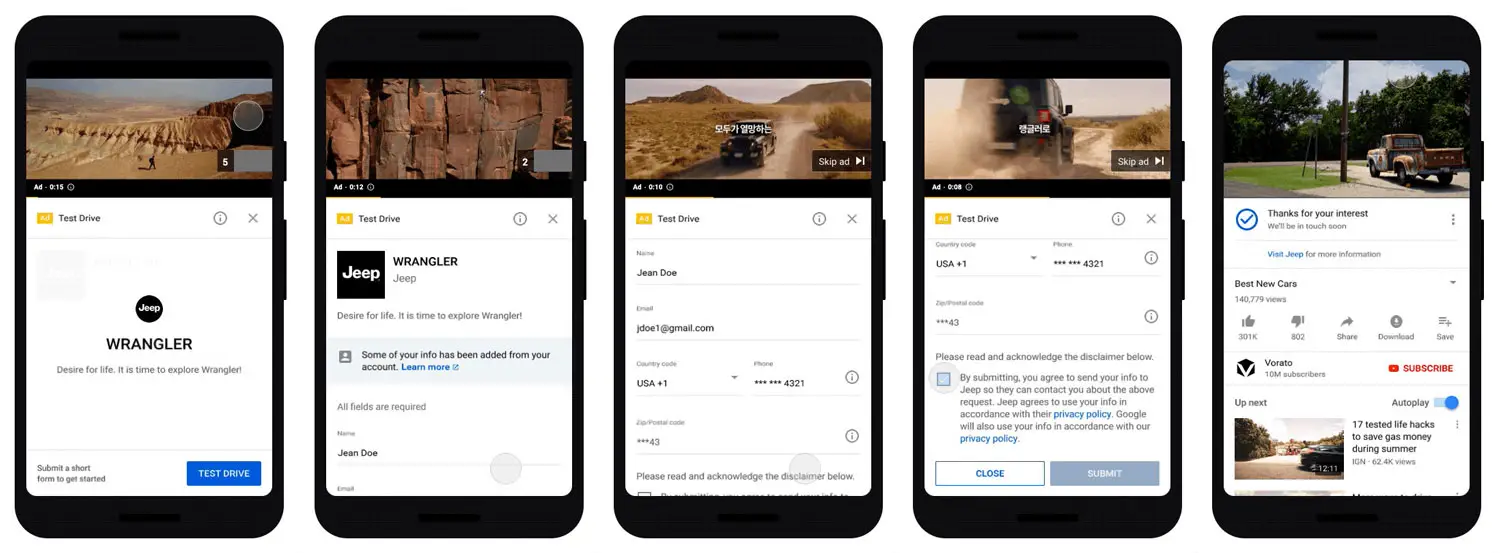After testing lead form ad extensions in Search campaigns since last October, Google is extending the feature to YouTube and Discovery campaigns.
Back in October of last year, Google started rolling out lead form ad extensions in beta. The new feature works in very much the same way as Lead Generation ads on other platforms, letting users submit their contact information in a form – to show interest in a product or service.
As with other platforms, some information in the forms is pre-populated if a user is signed in. Submitted data is not used for ads personalization.
Related | Google Finally Rolls Out ‘Nearby Share’ Feature On Android
Touted as a way to “capture interest when potential customers are searching for your company, products, or services on Google,” lead form extensions were only available in Search campaigns up until now. This week, however, Google is bringing the feature to YouTube and Discovery campaign ads as well. The company also says that lead form extensions will start becoming available in Display campaigns later this year.
Advertisers can customize their lead forms with a title, description, and submission message, and specify the specific information they want to get from customers – a customer’s name, their email, their phone number, and postcode. In addition to the above, advertisers can now collect city, state, and country information, as well as business contact information, like company name, job title, work email, work phone.

Advertisers also have the option to add pre-set questions by vertical. For example, under the Real estate vertical, a “What price range are you looking for” can be added automatically.
In order to create and use lead form extensions, a Google Ads account must be in a “non-sensitive vertical or sub-vertical” however some of these “sensitive verticals and sub-verticals” are not eligible for the feature. You can find out more about the requirements here.
To get their leads, advertisers can download a CSV or use webhooks to automatically import data into their CRM or customer data platform. Google says that it will soon roll out solutions that make it easier to import offline conversion data “by just using the information people already give you in your lead form.”
